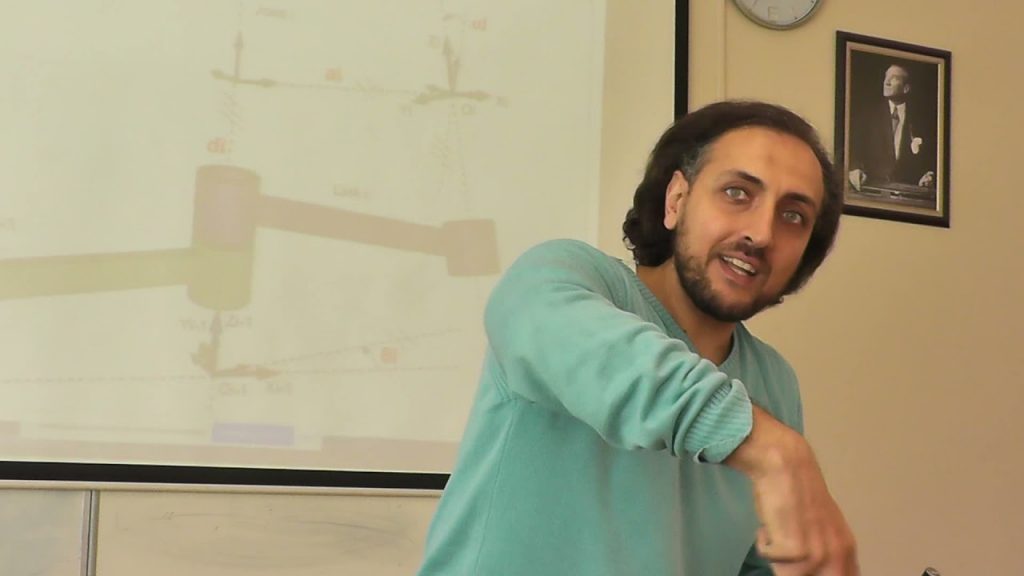If you're interested in learning about the basic components of industrial robots, the different types of joints they have, the DH parameters used in their design, and the various types of industrial robots available, then this lecture is for you. In this article, we will explore these topics in detail, providing you with valuable insights into the world of industrial robotics.
1. Basic Components of an Industrial Robot:
Industrial robots consist of several key components that work together to perform various tasks. These components include:
- Manipulator: The manipulator is the arm-like structure of the robot that performs the physical tasks. It is composed of several links and joints that allow the robot to move and perform its designated operations.
- End Effector: The end effector is the tool or attachment that is connected to the end of the robot's manipulator. It can be a gripper, a welding torch, a spray nozzle, or any other tool required for the specific task the robot is designed for.
- Controller: The controller is the brain of the robot. It receives input from sensors, processes the information, and sends commands to the actuators to perform the desired actions. The controller also manages the overall operation of the robot, including programming and monitoring.
- Actuators: Actuators are responsible for converting electrical signals from the controller into mechanical motion. They can be electric motors, hydraulic systems, or pneumatic systems, depending on the robot's requirements.
2. Types of Joints:
Joints are the points where two or more links of a robot's manipulator connect. There are several types of joints commonly used in industrial robots, including:
- Revolute Joint: This type of joint allows rotational motion around a single axis. It is commonly used to provide jointed movement in a robot's arm.
- Prismatic Joint: A prismatic joint enables linear motion along a single axis. It is often used to provide sliding or telescoping motion in a robot's arm.
- Spherical Joint: Also known as a ball joint, this type of joint allows for rotational motion in multiple directions. It provides increased flexibility in a robot's movement.
- Cylindrical Joint: A cylindrical joint combines the characteristics of a revolute joint and a prismatic joint. It allows rotational and linear motion along a common axis.
3. DH Parameters:
DH parameters, short for Denavit-Hartenberg parameters, are widely used to describe the kinematics and geometry of robot manipulators. They define the relationship between consecutive links and joints in a robot's arm, enabling precise control and movement.
DH parameters consist of four values for each joint: the link length, the link twist, the link offset, and the joint angle. By assigning appropriate values to these parameters, the movement and position of the robot's end effector can be accurately calculated.
4. Types of Industrial Robots:
Industrial robots come in various types, each designed for specific applications. Some common types of industrial robots include:
- Articulated Robots: These robots have rotary joints and resemble a human arm, providing flexibility and a wide range of motion. They are commonly used in assembly, welding, and material handling tasks.
- Cartesian Robots: Also known as gantry robots, these robots move in a three-dimensional Cartesian coordinate system. They are often used for pick and place operations and in CNC machines.
- SCARA Robots: SCARA stands for Selective Compliance Assembly Robot Arm. These robots have a spherical work envelope and are often used in tasks that require high-speed and precise movements, such as assembly and packaging.
- Delta Robots: Delta robots are known for their fast and precise movements. They are commonly used in applications that require high-speed picking, packaging, and assembly.
- Collaborative Robots: Collaborative robots, or cobots, are designed to work alongside humans. They have advanced sensors and safety features that allow them to safely interact with human operators, making them ideal for tasks that require human-robot collaboration.
In conclusion, industrial robots are complex machines that consist of various components, joints, and DH parameters. Understanding the basic components of industrial robots, the types of joints they have, the DH parameters used in their design, and the different types of industrial robots available is crucial for anyone interested in the field of robotics.
Check the coil packing solution with a leading manufacturer for a professional solution just here. Industrial Robot
"Exploring the Various Joints and Types of Industrial Robots in MEM834-Lecture2: KTO-Industrial Robots"






